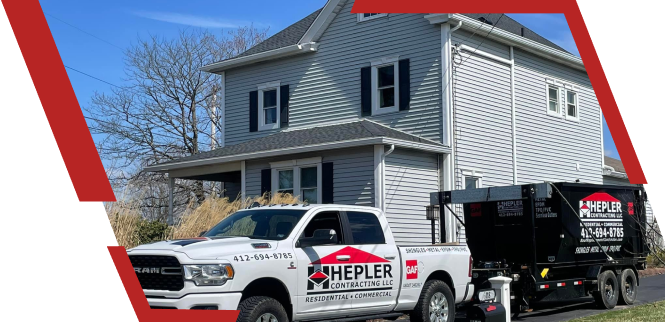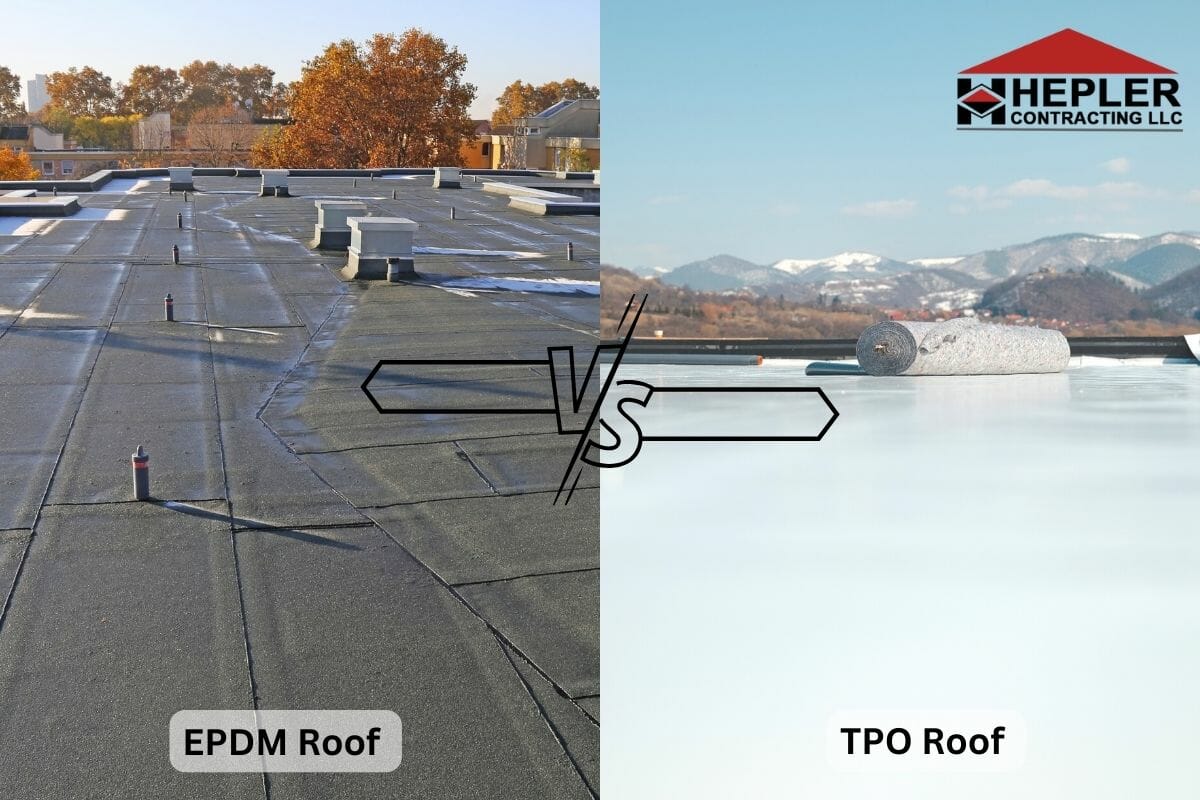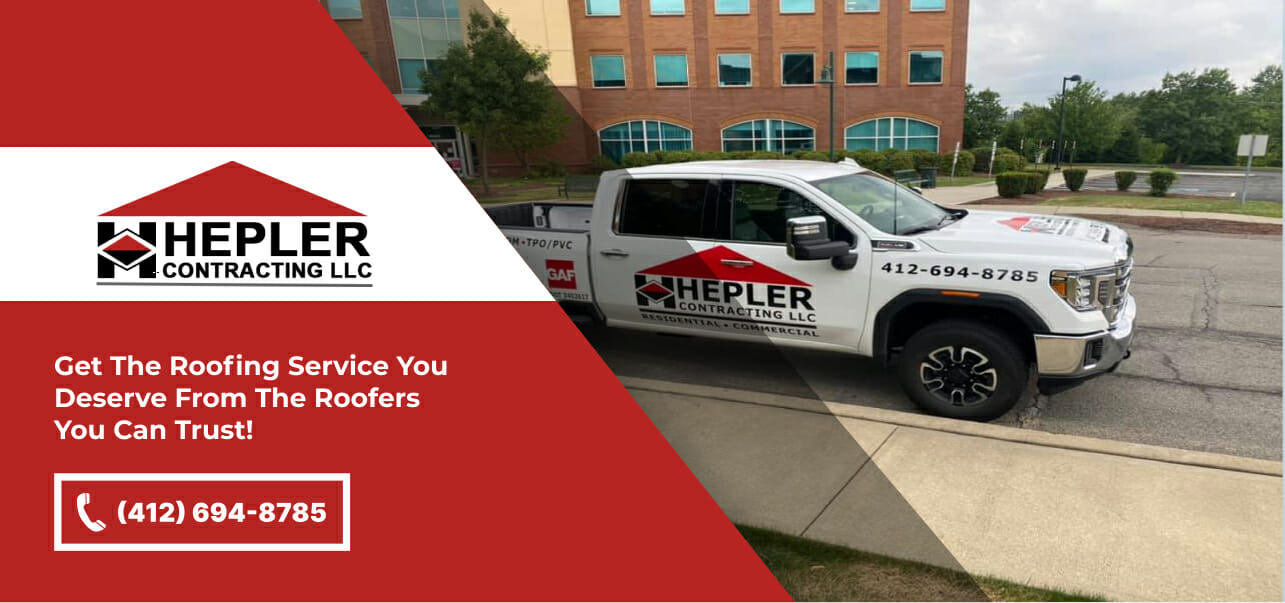There are numerous blogs and articles on the topic of EPDM vs. TPO. However, most of them are either confusing or missing specific details about these two flat roofing membranes.
This article explains the difference between EPDM and TPO in a simple way and compares the two without missing any crucial information.
At Hepler Contracting LLC, we are passionate about the roofing industry and do our best to educate you about the best roofing materials available for your property. EPDM and TPO are the most popular roofing membranes for flat and low-slope roofs. It is essential to learn everything about the two before making a choice.
By the end of this article, you will learn the following:
- The meaning and function of single-ply roofing membranes.
- The difference between EPDM and TPO roofs.
- Which one of them will suit your needs better.
To understand EPDM and TPO, you must first know what a single-ply roofing membrane is.
What Are Single-Ply Roofing Membranes?
Single-ply means a single layer of sheet or membrane. EPDM and TPO are single-ply roofing membranes that form the roof’s last waterproofing and protective layer. Single-ply roofing membranes are suitable for flat and low-slope roofs.
What Is A EPDM Roof?
EPDM stands for ethylene propylene diene monomer, a mix of rubber and carbon. It is one of the oldest single-ply roofing membranes in the industry. EPDM roofs can last almost 30 years with proper upkeep. The material is naturally black, highly impact-resistant, and can withstand extreme temperatures.
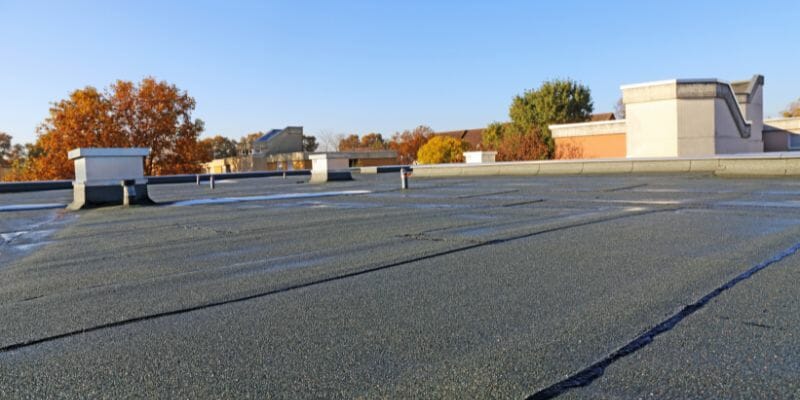
What Is A TPO Roof?
TPO is a comparatively new roofing membrane that is rapidly becoming a popular choice. TPO stands for thermoplastic polyolefin, a type of rubberized fiberglass composition. A TPO roofing membrane can stand strong for about 20 years, depending on the area’s weather conditions. This roofing membrane is naturally white, which means it’s excellent at reflecting heat during the summer.
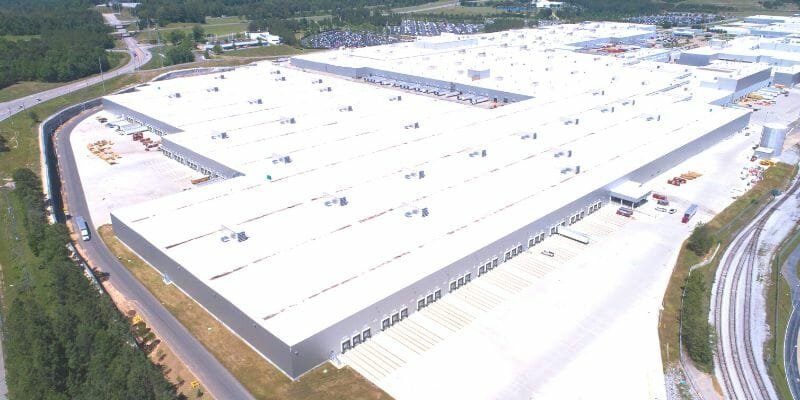
EPDM Vs. TPO: A Comparison
EPDM and TPO are both good roofing materials but have specific properties that make them suitable for different kinds of buildings and industries. We’ve compared the two single-ply membranes based on nine parameters that are extremely crucial to commercial buildings.
#1 Durability
Each roofing material has different capacities, but how long they last are a long-standing debate. When we talk about TPO and EPDM, they are single-ply membranes. This type of roofing material has an average lifespan of about 20 to 30 years, which is also true for PVC membranes.
Since TPO is still evolving, there are varying expectations. It can last between 15 and 25 years, depending on the manufacturer, maintenance, and local weather conditions. Therefore, we recommend choosing a top manufacturer like GAF, which provides a 25-year warranty and a 30-year guarantee on GAF’s EverGuard Extreme TPO membrane.
As for EPDM, you can expect it to survive up to 30 years without needing extensive repairs.
#2 Installation Methods And Cost
TPO and EPDM roofs have similar installation techniques and costs. On average, installing a TPO or EPDM roof costs between $8 and $25 per square foot. The final expense depends on the labor cost, installation technique, and other roofing materials. Below are the three most common installation techniques for TPO and EPDM:
Mechanical Fastening
Mechanical roof attachment involves driving screws through the membrane to attach it directly to the roof decking. This method is more popular as it is quick, easy, and costs relatively less. However, a fully adhered fastening method is more suitable and durable if your commercial building is situated near the coast, or in a windy and stormy area. Mechanical fastening leaves room for the membrane to inflate and flutter, increasing heating costs over time.
Full Adhesion
With this method, the roofing membrane is installed using an adhesive layer. Full adhesion ensures the membrane sticks entirely to the insulation material or decking below it. When the membrane has completely adhered, it won’t inflate or flutter due to wind uplift. However, adhesives can start breaking down over time, and you may need to re-adhere the shrinking areas, or the entire membrane when this happens. For this reason, the installation method usually also costs more.
Welding
Welding involves fusing the membrane to the roof insulation or decking by melting it using heat guns and sealing tape. This is a complex method that requires more precise and experienced hands. Welding creates a stronger bond that won’t come off in harsh weather conditions.
#3 Heat Resistance
Since TPO is white on both sides, it is more suitable for hotter regions since it’s officially considered a cool roofing material. A bright-colored roof reflects heat instead of absorbing it. This helps keep your building’s cooling costs in check, and the interior temperature remains balanced during the summer.
At the same time, EPDM is naturally black, absorbing the sun’s heat, which can result in increased cooling costs. However, EPDM is better at resisting UV damage which is one of the reasons why the membrane lasts longer than TPO. For this reason, EPDM is the better option for buildings in mild to warm climates.
#4 Fire Resistance
TPO and EPDM membranes are both resistant to fire, but their degree of resistance depends on their quality. The highest fire resistance grade is Class A, while B is a little lower, and Class C is the lowest. If your area’s building codes require your property to have a Class A fire-resistant roof, you can find those versions in both TPO and EPDM membranes. The ability for flames to spread quickly is also affected by the type of insulation you choose. Gypsum cover boards and roof insulation materials like foam, fiberglass, and mineral fibers perform well in this regard.
#5 Performance In Winter
A good quality TPO roof with tensile strength can resist freezing, curling, and slitting under cold temperatures and snow accumulations. However, a cheaper, inferior version won’t stand up to the cold. An EPDM roof also has excellent cold resistance, suitable for freezing climates. It also offers greater insulation and absorbs heat, keeping cold drafts away.
#6 Impact Resistance
Synthetic and natural rubber notably have the highest impact resistance. Since EPDM is a rubber-based roofing membrane, it is an excellent choice for hail-prone areas. It absorbs and distributes the force that hailstones generate equally, preventing holes and cuts on its surface.
#7 Effects Of Chemicals And Oil
TPO roofs are highly resistant to damage caused by industrial chemicals, oil, salt, grease, and fumes. On the other hand, EPDM roofs can be negatively affected when coming in contact with these components. If your business is involved in the storage or processing of any of these substances, it is essential to choose a roof that won’t deteriorate under such conditions.
#8 Loading Capacity
Single-ply membranes do not hold up well to high amounts of foot traffic or sharp objects. Built-up roofs, Bitumen, concrete, and cement roofs are ideal for buildings that may involve needing to access the roof often, and working with tools or storing equipment.
Single-ply membranes can hold the weight of solar panels and light vegetation. If you want to install solar panels, it’s better to have an EPDM roof that already attracts and absorbs heat.
White TPO roofs are not suitable for solar panels, as the surface will reflect heat, neutralizing the function of solar panels. If you still prefer a TPO roof, it is better to get it dyed or stained with black color. This may increase the cost, but it will help accommodate the solar panels.
#9 Environmental Impact
TPO and EPDM roofs are both eco-friendly in different ways. The coolness of a TPO roof helps reduce energy consumption, while EPDM roofs are manufactured using more eco-friendly materials.
Let’s look at some practical applications and examples of buildings and industries using TPO and EPDM roofs.
EPDM Vs. TPO: Practical Applications
Early on many commercial buildings relied on PVC and EPDM membranes. When TPO was introduced, the automobile industry was the first to get it installed. Gradually, TPO started covering the roofs of healthcare facilities, retail stores, and similar buildings. Here are some examples of buildings and industries that utilize TPO and EPDM roofing.
TPO
- Automobile shops
- Healthcare facilities
- Restaurants
- Manufacturing companies
- Retail stores
EPDM
- Warehouses
- Libraries
- Motels
- Fitness centers
- Movie theatres
It is crucial to hire a commercial roofing company that specializes in all types of flat and low-slope roofing materials. This will minimize the chances of installation errors and allow your business to be eligible for extended warranties and insurance claims.
If you live in the greater Pittsburgh area, we can help you choose the right roofing material and install it perfectly.
EPDM Vs. TPO: Which One Is Best For You?
At Hepler Contracting LLC, we have been installing flat and low-sloped roofing systems for years! If you need a commercial roof installation service or need help choosing the right roofing material, you can rely on our commercial roofing experts for a reasonable and flawless service. Contact us at, (412) 694-8785 for a free consultation and estimate.
We look forward to giving you the best advice and a durable roof!
